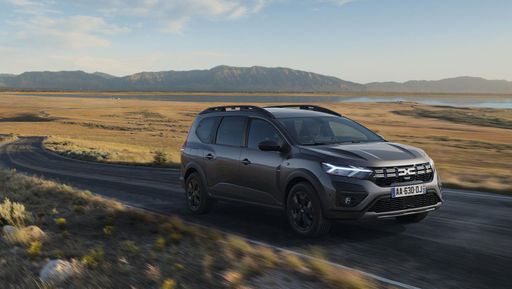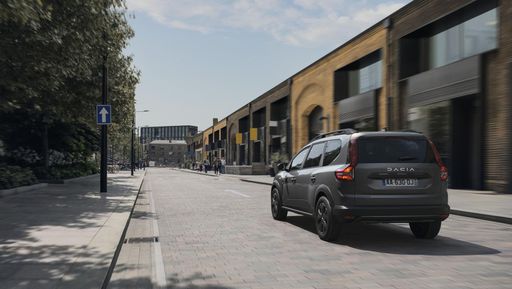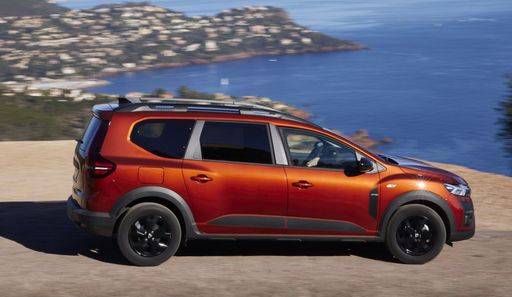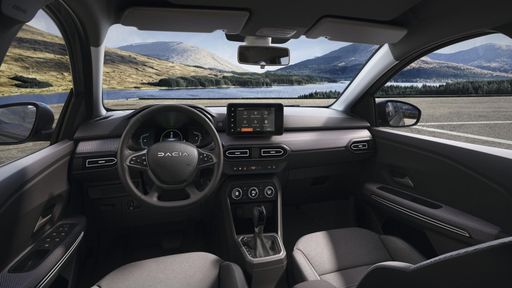Alfa Romeo Junior vs Dacia Jogger – Which model is better for everyday use?
Two cars, one duel: Alfa Romeo Junior meets Dacia Jogger.
Which one wins in performance, efficiency and value for money? Find out now!
Costs and Efficiency:
Looking at overall running costs, both models reveal some interesting differences in everyday economy.
Dacia Jogger has a convincingly advantage in terms of price – it starts at 15400 £, while the Alfa Romeo Junior costs 25700 £. That’s a price difference of around 10251 £.
Fuel consumption also shows a difference: Dacia Jogger manages with 4.70 L and is therefore barely noticeable more efficient than the Alfa Romeo Junior with 4.80 L. The difference is about 0.10 L per 100 km.
Engine and Performance:
Power, torque and acceleration are the classic benchmarks for car enthusiasts – and here, some clear differences start to show.
When it comes to engine power, the Alfa Romeo Junior has a clearly edge – offering 280 HP compared to 140 HP. That’s roughly 140 HP more horsepower.
In acceleration from 0 to 100 km/h, the Alfa Romeo Junior is decisively quicker – completing the sprint in 5.90 s, while the Dacia Jogger takes 9.80 s. That’s about 3.90 s faster.
In terms of top speed, the Alfa Romeo Junior performs a bit better – reaching 206 km/h, while the Dacia Jogger tops out at 174 km/h. The difference is around 32 km/h.
There’s also a difference in torque: Alfa Romeo Junior pulls significantly stronger with 345 Nm compared to 200 Nm. That’s about 145 Nm difference.
Space and Everyday Use:
Beyond pure performance, interior space and usability matter most in daily life. This is where you see which car is more practical and versatile.
Seats: Dacia Jogger offers distinct more seating capacity – 7 vs 5.
In curb weight, Dacia Jogger is to a small extent lighter – 1251 kg compared to 1380 kg. The difference is around 129 kg.
In terms of boot space, the Dacia Jogger offers noticeable more room – 607 L compared to 415 L. That’s a difference of about 192 L.
In maximum load capacity, the Dacia Jogger performs distinct better – up to 1819 L, which is about 539 L more than the Alfa Romeo Junior.
When it comes to payload, Dacia Jogger distinct takes the win – 582 kg compared to 420 kg. That’s a difference of about 162 kg.
Who comes out on top?
Overall, the Alfa Romeo Junior shows itself to be is largely superior and secures the title of DriveDuel Champion.
It convinces with the more balanced overall package and proves to be the more versatile choice for everyday use.
 @ Alfa Romeo / Stellantis Media
@ Alfa Romeo / Stellantis Media
Alfa Romeo Junior
Alfa Romeo Junior
The Alfa Romeo Junior captures the essence of Italian design with its sleek lines and compact dimensions, making it an icon of elegance and performance. With a spirited driving experience and a charming retro aesthetic, it appeals to enthusiasts and casual drivers alike. This delightful car embodies the brand's rich heritage while remaining a fun and engaging option for those seeking a unique automotive experience.
details @ Alfa Romeo / Stellantis Media
@ Alfa Romeo / Stellantis Media
 @ Alfa Romeo / Stellantis Media
@ Alfa Romeo / Stellantis Media
 @ Alfa Romeo / Stellantis Media
@ Alfa Romeo / Stellantis Media
Dacia Jogger
The Dacia Jogger offers a spacious and versatile interior, making it an excellent choice for families seeking practicality and comfort. Its design combines the robustness of an SUV with the functionality of an estate, providing a reliable option for various driving needs. With a focus on affordability, the Jogger ensures that essential features are accessible without compromising on quality.
details @ Dacia / Renault Group Media
@ Dacia / Renault Group Media
 @ Dacia / Renault Group Media
@ Dacia / Renault Group Media
 @ Dacia / Renault Group Media
@ Dacia / Renault Group Media
 @ Dacia / Renault Group Media
@ Dacia / Renault Group Media
 @ Alfa Romeo / Stellantis Media
@ Alfa Romeo / Stellantis Media
|
 @ Dacia / Renault Group Media
@ Dacia / Renault Group Media
|
|
|
|
Costs and Consumption |
|
|---|---|
|
Price
25700 - 41600 £
|
Price
15400 - 23400 £
|
|
Consumption L/100km
4.8 - 5.4 L
|
Consumption L/100km
4.7 - 7.8 L
|
|
Consumption kWh/100km
15.1 - 17.5 kWh
|
Consumption kWh/100km
-
|
|
Electric Range
344 - 410 km
|
Electric Range
-
|
|
Battery Capacity
0.4 - 51 kWh
|
Battery Capacity
0.60 kWh
|
|
co2
0 - 119 g/km
|
co2
105 - 137 g/km
|
|
Fuel tank capacity
44 - 45 L
|
Fuel tank capacity
40 - 50 L
|
Dimensions and Body |
|
|---|---|
|
Body Type
SUV
|
Body Type
MPV
|
|
Seats
5
|
Seats
5 - 7
|
|
Doors
5
|
Doors
5
|
|
Curb weight
1380 - 1689 kg
|
Curb weight
1251 - 1460 kg
|
|
Trunk capacity
340 - 415 L
|
Trunk capacity
160 - 607 L
|
|
Length
4173 mm
|
Length
4547 mm
|
|
Width
1781 mm
|
Width
1784 mm
|
|
Height
1505 - 1538 mm
|
Height
1674 mm
|
|
Max trunk capacity
1205 - 1280 L
|
Max trunk capacity
1807 - 1819 L
|
|
Payload
390 - 420 kg
|
Payload
393 - 582 kg
|
Engine and Performance |
|
|---|---|
|
Engine Type
Electric, Petrol MHEV
|
Engine Type
Full Hybrid, LPG, Petrol
|
|
Transmission
Automatic
|
Transmission
Automatic, Manuel
|
|
Transmission Detail
Dual-Clutch Automatic, Reduction Gearbox
|
Transmission Detail
Automatic Gearbox, Manual Gearbox
|
|
Drive Type
Front-Wheel Drive, All-Wheel Drive
|
Drive Type
Front-Wheel Drive
|
|
Power HP
136 - 280 HP
|
Power HP
91 - 140 HP
|
|
Acceleration 0-100km/h
5.9 - 9.1 s
|
Acceleration 0-100km/h
9.8 - 13.2 s
|
|
Max Speed
150 - 206 km/h
|
Max Speed
167 - 174 km/h
|
|
Torque
230 - 345 Nm
|
Torque
160 - 200 Nm
|
|
Number of Cylinders
3
|
Number of Cylinders
3 - 4
|
|
Power kW
100 - 207 kW
|
Power kW
67 - 103 kW
|
|
Engine capacity
1199 cm3
|
Engine capacity
999 - 1598 cm3
|
General |
|
|---|---|
|
Model Year
2024 - 2025
|
Model Year
2024 - 2025
|
|
CO2 Efficiency Class
A, C, D
|
CO2 Efficiency Class
C, D
|
|
Brand
Alfa Romeo
|
Brand
Dacia
|
What drive types are available for the Alfa Romeo Junior?
Available configurations include Front-Wheel Drive or All-Wheel Drive.
The prices and data displayed are estimates based on German list prices and may vary by country. This information is not legally binding.
